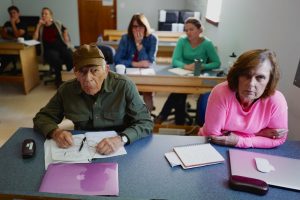The United States is slowly coming out of these crazy covid times….scarred badly, but alive and kicking. Education, typically a slow-moving and change-resistant institution, saw that it can actually pivot quickly…and in many cases, effectively.
What did we learn?
As a country, we learned that remote education is possible, and in some ways, highly effective. Will it replace in-person school? Absolutely not. But, we don’t really have to choose one or the other. As in business, the best way forward is not one answer, but instead a hybrid approach that takes the best of many worlds.
There are also some powerful questions to ask
Remote education allows schools to reach students outside of the traditional 8:00am-3:00pm school day. What does this mean? Some communities may find value in having school available 24/7/365. That does not mean your teachers are working 24/7/365, but the learning is available. This also means we are not necessarily bound to a Sept-June school year, with a spring break, summer, vacation, and holiday break. For the in-person environment, it means the doors can be open evenings, weekends, and during summer break. There may be students and teachers who prefer a non-traditional schedule. Maybe there is night school, weekend school, a true summer school, but that are equal and comparable to any other education available,
We learned that some types of classes can be effectively done asynchronously, where the class material is prepared in advance and students can access it any time, anywhere. Extra help, additional resources, reinforcement activities can be effectively done without a teacher present. Amazing tools such as Khan Academy allow students to learn new content without the need for a teacher to deliver. Many teachers spent this last year generating huge amounts of online resources and learning tools. We can take advantage of this. Some educators even learned that they enjoy this challenge and will take some of these new tools back into their physical classrooms. Some students thrived in this world and learned some self-reliance tools to enable them to learn on their own.
At the college level, we saw the high cost of college finally get challenged. Is the value there as it once was? We saw online learning become not only a realistic option but a highly effective instrument of change. Many colleges are offering online options, and in some cases, entire degrees. With most k-12 schools being liberal arts-focused, where students explore a wide variety of classes, do students still need to spend an extra 1 or 2 years at the college level to complete “general education” requirements? That alone can reduce the cost of higher ed by tens of thousands of dollars. We learned that lecture, note-taking, and multiple-choice tests as the main instrument of educational delivery no longer have a place. Online learning opens up the possibilities and potential for cheating. Designing assignments and evaluations which are generic in nature, purely objective, and repeatedly used, are ineffective. The role of project-based learning has gained traction and acceptance, as educators realized not only can it work online, but when planned correctly, can be a highly effective instrument in both in-person and online learning. Educators over the last year saw the value of changing it up to keep the engagement factor alive. In remote learning, teachers quickly learned that they have to break up the learning. 60 minutes of passive learning will put your students to sleep. Hmmmm…wasn’t that also true in the classroom as well? Teachers quickly learned that students want and need to collaborate together. Hmmmm…wasn’t that also true in the classroom as well? Teachers quickly learned that providing a variety of experiences, including multi-media, taking advantage of individual time as well as group time, shorter and longer assignments, summative and formative assessments–all of these lead to a more engaged classroom. Hmmmm…wasn’t that also true in the classroom as well?Remote learning did not necessarily introduce new problems, but it brought existing imperfections(and opportunities I might add) in our educational systems to the surface. Things that we have known, or should have known, to be true simply came to the forefront. And it was also front and center on the news.
Covid did not cause our schools to fail. The schools that will fail going forward from this point will be the ones that go back to the pre-covid status quo. If there was ever a time to redefine what we want in our schools, now is the time.


